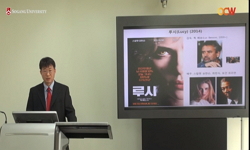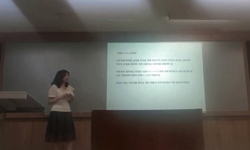최근 신어에서는 구의 단어화가 활발하게 일어나고 있다. 본고에서는 국어에 나타나는 구의 단어화를 두 가지 유형으로 나누어 검토하였다. ‘구의 단어화Ⅰ’은 이미 존재하고 있는 구 구...
http://chineseinput.net/에서 pinyin(병음)방식으로 중국어를 변환할 수 있습니다.
변환된 중국어를 복사하여 사용하시면 됩니다.
- 中文 을 입력하시려면 zhongwen을 입력하시고 space를누르시면됩니다.
- 北京 을 입력하시려면 beijing을 입력하시고 space를 누르시면 됩니다.
https://www.riss.kr/link?id=A107987868
- 저자
- 발행기관
- 학술지명
- 권호사항
-
발행연도
2021
-
작성언어
Korean
-
주제어
신어 ; 단어형성 ; 약칭어 ; 차용번역어 ; 점착어 ; new words ; word-formation ; abbreviations ; loan translated words ; adhesive
-
등재정보
KCI등재
-
자료형태
학술저널
- 발행기관 URL
-
수록면
157-178(22쪽)
- DOI식별코드
- 제공처
-
0
상세조회 -
0
다운로드
부가정보
국문 초록 (Abstract)
최근 신어에서는 구의 단어화가 활발하게 일어나고 있다. 본고에서는 국어에 나타나는 구의 단어화를 두 가지 유형으로 나누어 검토하였다. ‘구의 단어화Ⅰ’은 이미 존재하고 있는 구 구성이 단어 형태가 되는 문제이고, ‘구의 단어화Ⅱ’는 새로 나타나는 의미를 구 구성과 유사한 형태의 단어로 표현하는 문제이다. 전자에 속하는 문제로는 약칭어의 생성, 동사구의 명사화, 차용번역어의 생성이 있고, 후자의 문제로는 고유명사의 생성, 점착어의 활용이 있다. 약칭어는 이미 존재하는 구나 문장에서 각 단어의 일부를 잘라 합쳐서 새 단어를 만드는 방식인데, 원래 우리말에서 나타나던 방식이다. 그런데 기존의 단어들은 한자어가 대부분인 반면 최근 생성되는 단어들은 ‘내로남불, 아아’처럼 고유어나 외래어인 점이 특이하다. 다음으로 동사구의 명사화도 약칭어에서 발생하는데, ‘열공, 즐주’처럼 동사구가 명사가 된 후 다시 ‘열공하다, 즐주되다’로 동사가 되는 점이 주목된다. 차용번역어는 외래어 구가 단어가 될 때 원어의 영향을 받는 경우인데, ‘good night’이 ‘굿밤’이 되는 것이 그 예이다. ‘구의 단어화Ⅱ’는 고유명사의 생성, 그리고 ‘보습의 정석템’처럼 점착어 ‘템’을 활용한 단어화가 있다. ‘템’이라는 요소는 접사나 단어 형성전용요소와 달리 단독으로 쓰일 수 있으며 그 의미도 단독일 때와 구에 결합할 때가 동일한 점이 특이하다. 이처럼 신어를 중심으로 구가 단어화되는 방식이 다양하게 나타나고 있음이 흥미롭다 하겠다.
다국어 초록 (Multilingual Abstract)
In this paper I examined two types of the Word-Formation of Phrase. First type is that the phrase which has existed became new word. And second one is that phrase-type new words express new meaning. First type include formation of abbreviations, nouni...
In this paper I examined two types of the Word-Formation of Phrase. First type is that the phrase which has existed became new word. And second one is that phrase-type new words express new meaning. First type include formation of abbreviations, nounization of verb phrases, and formation of loan translated words. And second one is formation of adhesive. Abbreviations are a method of creating new words by cutting and combining parts of each word in a sentence that already exists, and this is the method that originally appeared in Korean. While most of the existing abbreviations are Chinese words, the recently generated words are native or foreign words such as ‘Naeronambul, Ahah.’ Next, the nounization of the verb phrase also occurs in the abbreviation, and it is noteworthy that after verb phrase become a noun like ‘Yeolgong, Jeulju’, it becomes a verb like ‘Yeolgonghada, Jeuljudeoda’ again. Loan translated words are cases where foreign phrases are influenced by the original language when they become words, and an example is that ‘good night’ becomes ‘gutbam’ Second type appears in word-formation using the adhesive ‘Tem’ like a ‘Boseupui jeongseoktem’. And the element ‘Tem’ can be used alone, unlike affixes or word formation elements, and its meaning is the same when used not only alone but also as combined with phrases. It is interesting that the Word-Formation of Phrase appear in various ways in new words.
목차 (Table of Contents)
- 국문 요약
- 1. 머리말
- 2. ‘구의 단어화’의 개념
- 3. ‘구의 단어화 Ⅰ’의 유형
- 4. ‘구의 단어화 Ⅱ’의 유형
- 국문 요약
- 1. 머리말
- 2. ‘구의 단어화’의 개념
- 3. ‘구의 단어화 Ⅰ’의 유형
- 4. ‘구의 단어화 Ⅱ’의 유형
- 5. 맺음말
- 참고문헌
- Abstract
동일학술지(권/호) 다른 논문
-
해방공간, 장덕조 소설의 젠더화된 인식 고찰 -장편소설 『十字路』를 중심으로-
- 우리말글학회
- 김윤서(Kim, Yun-seo)
- 2021
- KCI등재
-
장인의 고집과 소설가의 윤리 -이청준 소설 「줄광대」, 「과녁」을 중심으로-
- 우리말글학회
- 조소명(Cho, So-myung)
- 2021
- KCI등재
-
- 우리말글학회
- 차성환(Cha, Shung hwan)
- 2021
- KCI등재
-
언어유형론적 관점에서 본 한국어와 일본어의 술어적 소유구문
- 우리말글학회
- 김희성(Kim, Hee-sung)
- 2021
- KCI등재





 KCI
KCI DBpia
DBpia



